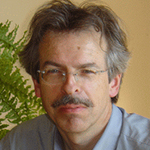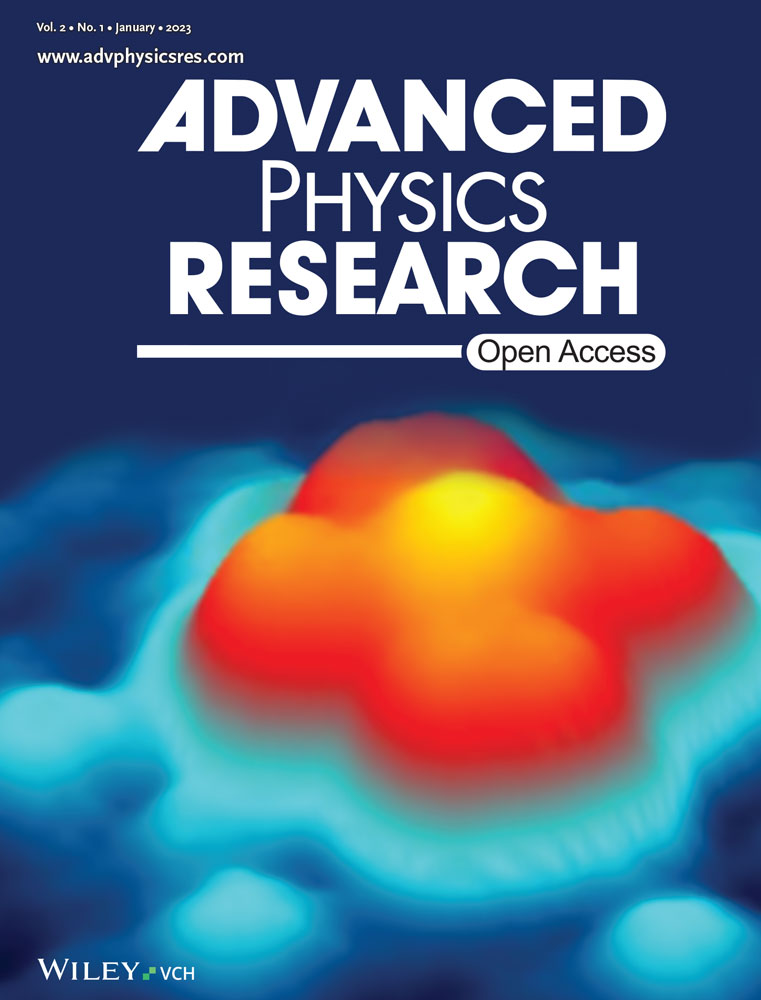
Senior member of the INSTITUT UNIVERSITAIRE DE FRANCE
Jean-Pierre BUCHER est professeur de physique à l’Université de Strasbourg. Il a obtenu son doctorat à l’Ecole Polytechnique Fédérale de Lausanne (EPFL) pour son étude par échos de spin RMN des effets de taille quantique de nanoclusters métalliques. En 1989, il a été lauréat d’une «bourse de recherche avancée» de deux ans du Fonds National Suisse pour poursuivre des recherches sur les jets moléculaires à l’Université de Virginie (USA). Il y a développé une expérience de déflection de Stern-Gerlach pour l’étude d’amas magnétiques basée sur la vaporisation laser pulsée et la spectrométrie de masse à temps de vol. J.P. Bucher a observé pour la première fois une relaxation superparamagnétique dans des amas de cobalt libres ainsi que l’apparition de nombres magiques magnétiques dans des amas de terres rares de quelques atomes. En tant que scientifique invité au KFA-Jülich (1991), il a développé la microscopie tunnel pour l’étude d’adsorbats sur des surfaces. En 1992, il a passé 2 ans en tant que chercheur à l’EPFL, explorant de nouvelles voies de nano-structuration des surfaces, premiers travaux sur les structures auto-assemblées. En 1994, il est nommé professeur à l’Université Louis Pasteur et dirige une équipe de recherche à l’IPCMS. Ses activités de recherche portent sur les nanosciences moléculaires, avec pour objectif principal d’approfondir les connaissances des comportements multifonctionnels. Avec ses collègues il a mesuré plusieurs caractéristiques uniques telles que l’état de spin d’une molécule isolée. J.P. Bucher a développé de nouvelles approches spectroscopiques à la fois sur les jets moléculaires et en champ proche. Il a coordonné plusieurs projets nationaux et internationaux, notamment en tant que responsable du nœud français du réseau d’excellence MAGMANet de la Communauté européenne. Il est responsable de la plateforme instrumentale européenne Single Molecule Detection (European Institute of Molecular Magnetism, EIMM) depuis 2008. Il a été directeur de l’École Doctorale de Physique et Chimie-Physique (2009-2017). Il est auteur de 150 articles scientifiques dans des revues internationales et a été Professeur invité dans différentes universités dont Ruhr Universität Bochum, University of Nagoya, University of Kyoto, University of Virginia.
International projects
- QUSTEC – Quantum Science and Technologies at the European Campus. Doctoral training program.
- iJURC research program of Institute for Chemical Research (ICR), Kyoto University, “Interdisciplinary Approach to Nanostructured Materials for Applications” (2020-2023).
- LabEx NIE, “Entanglement of single molecule magnets via radical spins inside 2D networks” (2016-2020).
- Institut Universitaire de France (IUF), «SPINMAP» (Spin Manipulation with atoms and molecules) (2010-2015).
- International Center for Frontier Research in Chemistry (FRC) for the research Project « SPIN MASTER » (2008-2010).
- ANR-Blanc 2007 « SPIN MASTER » (ANR-07-BLAN-0139). « Spin injection for magnetic spectroscopy and spin transport in single objects » (2008-2010).
- 6th Framework Program, European Network of Excellence, No : 515762-2. “Molecular Approach to Nanomagnets and Multifunctional Materials” (2005-2009). Responsible for instrumental platforms (15 nodes, 150 researchers). Simultaneously coordinator of the SINGLEMO platform dedicated to the magnetic spectroscopy of single objects, in particular molecule magnets.
- 5th Framework Program, European contract RTD-Growth, No : G5RD-CT-2001-00478. New Nanoscale Materials for Advanced Magnetic Storage Devices. September 2001 to December 2004, coordinator.
Research Activies
Spin-polarized STM spectroscopy on single objects
Visualizing the Spin State of Individual Molecules
Structure and Spin-Polarized States of Cobalt Nanoislands
Magnetism of sub-micrometer dots and wires
Other activities
Cours de l’Ecole Doctorale de Physique et Chimie Physique
Comité Scientifique du Forum des Microscopies à Sonde Locale
Main scientific interest
- Tunneling and magnetotransport through single objects (atoms and molecules). New spatial resolving spectroscopies : polarized spin techniques. MFM and spatially resolved magnetic resonance.
- Electronic and magnetic properties of low dimensional systems. Quantum size effects. Transient phenomena in magnetic systems. Transport in mesoscopic systems. Localization and disorder.
- Self-organization of atomic and molecular clusters on surfaces. Phase transitions and critical phenomena in low dimensional systems. Emergence of solid state properties.
Recent results
- Hierarchical Self-Assembly and Conformation of Tb Double-Decker Molecular Magnets: Experiment and Molecular Dynamics. Nanomaterials 2023, 13, 2232. https://doi.org/10.3390/nano13152232
- When Molecular Dimerization Induces Magnetic Bi-Stability at the Metal-Organic Interface. Advanced Physics Research 2022. https://doi.org/10.1002/apxr.202200005
- Resolving Site-Specific Energy Levels of Small-Molecule Donor-Acceptor Heterostructures Close to Metal Contacts. Nanomaterials 2021, 11, 1618. https://doi.org/10.3390/nano11061618
- Morphological and optical properties of alpha- and beta-phase zinc (parallel to) phthalocyanine thin films for application to organic photovoltaic cells. J. Chem. Phys. 2020, 153, 144704. https://doi.org/10.1063/5.0022262
- Screening of the 4f-electron spin of TbPc2 single-molecule magnets on metal substrates by ligand channeling. Nanoscale 2019, 11, 21167-21179. https://doi.org/10.1039/C9NR05873G
- Molecular attachment to a microscope tip: inelastic tunneling, Kondo screening, and thermopower. Beilstein J. Nanotechnol. 2019, 10, 1243-1250. DOI:10.3762/bjnano.10.124
- Two-Dimensional Organometallic Kondo Lattice with Long-Range Antiferromagnetic Order. Journal of Physical Chemistry C. 2018, 122, 20046-20054. https://doi.org/10.1021/acs.jpcc.8b07059
- Role of pi-Radicals in the Spin Connectivity of Clusters and Networks of Tb Double-Decker Single Molecule Magnets. ACS Nano, 2017, 11, 10750-10760. DOI: 10.1021/acsnano.7b05804
- Conductance hysteresis and inelastic excitations at hydrogen decorated cerium atoms and clusters in a tunnel junction. Nano Research 2016, 9, 3171-3178. DOI 10.1007/s12274-016-1202-y
- Chapter “On-Surface Synthesis”, Part of the series Advances in Atom and Single Molecule Machines pp 115-129. Springer International Publishing 2015, DOI: 10.1007/978-3-319-26600-8_6
- Hierarchy of Chemical Bonding in the Synthesis of Fe-Phthalocyanine on Metal Surfaces. J. Phys. Chem. Lett. 2014, 5, 3175-3182. DOI: 10.1021/jz5015696
- Steric and electronic selectivity, from topological confinement to bond formation. Nano Research 2014, 7, 888–897. DOI 10.1007/s12274-014-0450-y
- Chiral Conformation of a Propeller-Like Open-Shell Molecule on Au(111). J. Phys. Chem. Lett. 2012, 3, 1559. https://pubs.acs.org/doi/10.1021/jz3003926
- Localization of electronic states at molecule-electrode interfaces. Phys. Rev. Lett. 2011, 107, 216801.
- Move an atom and watch its spin flip. Nature Nanotech. 2010, 5, 315.
- Direct observation of the tunnelling channels of a chemisorbed molecule. J. Phys. Chem. Lett. 2010, 1, 1517.
- Spin structure of an atomic protrusion : Probing single atoms on cobalt nanoislands. Phys. Rev. B 2009, 79, 113401.
- First Detection of the Spin State of Individual Cobalt-Phthalocyanine Molecules. Phys. Rev. Lett. 2008, 101, 116602.

